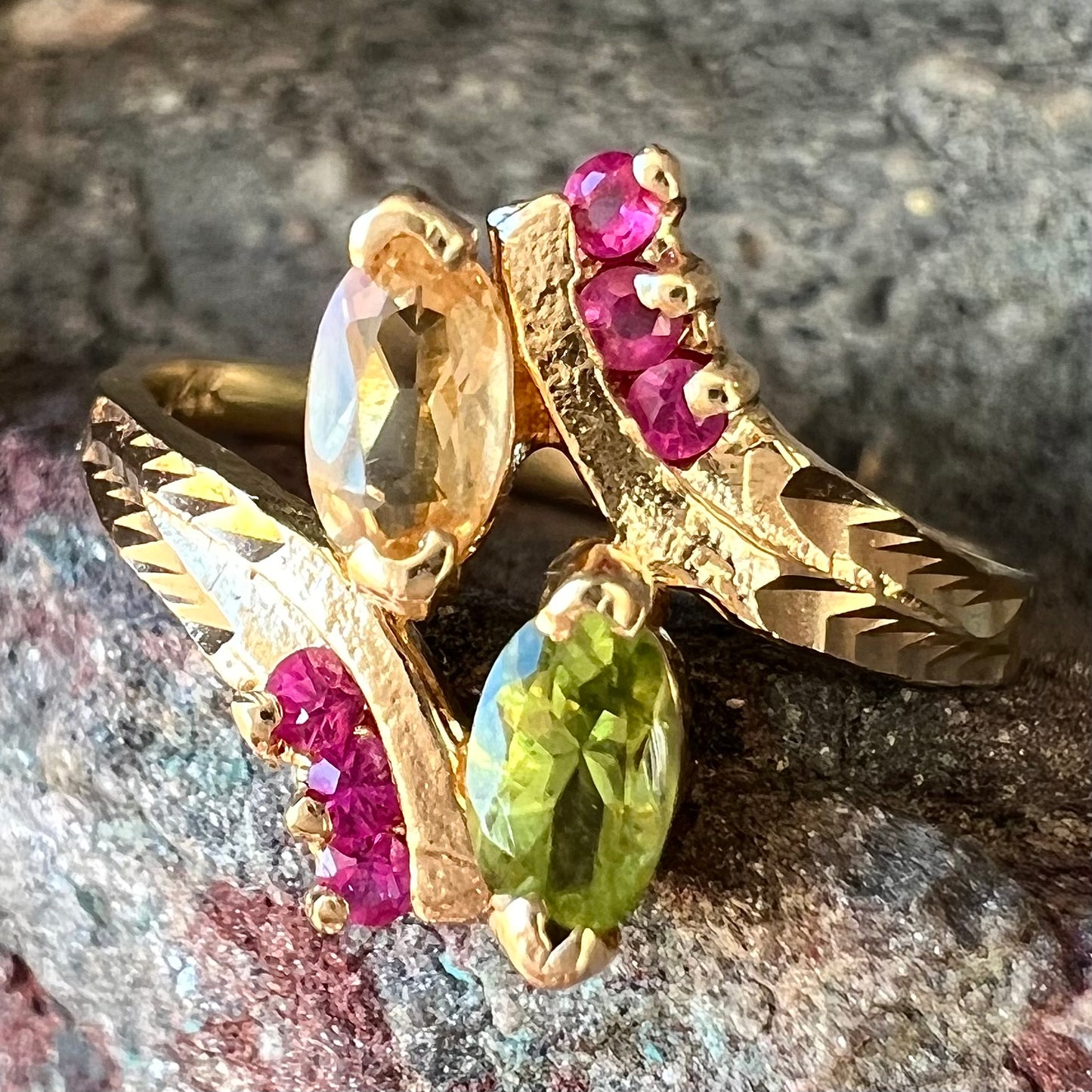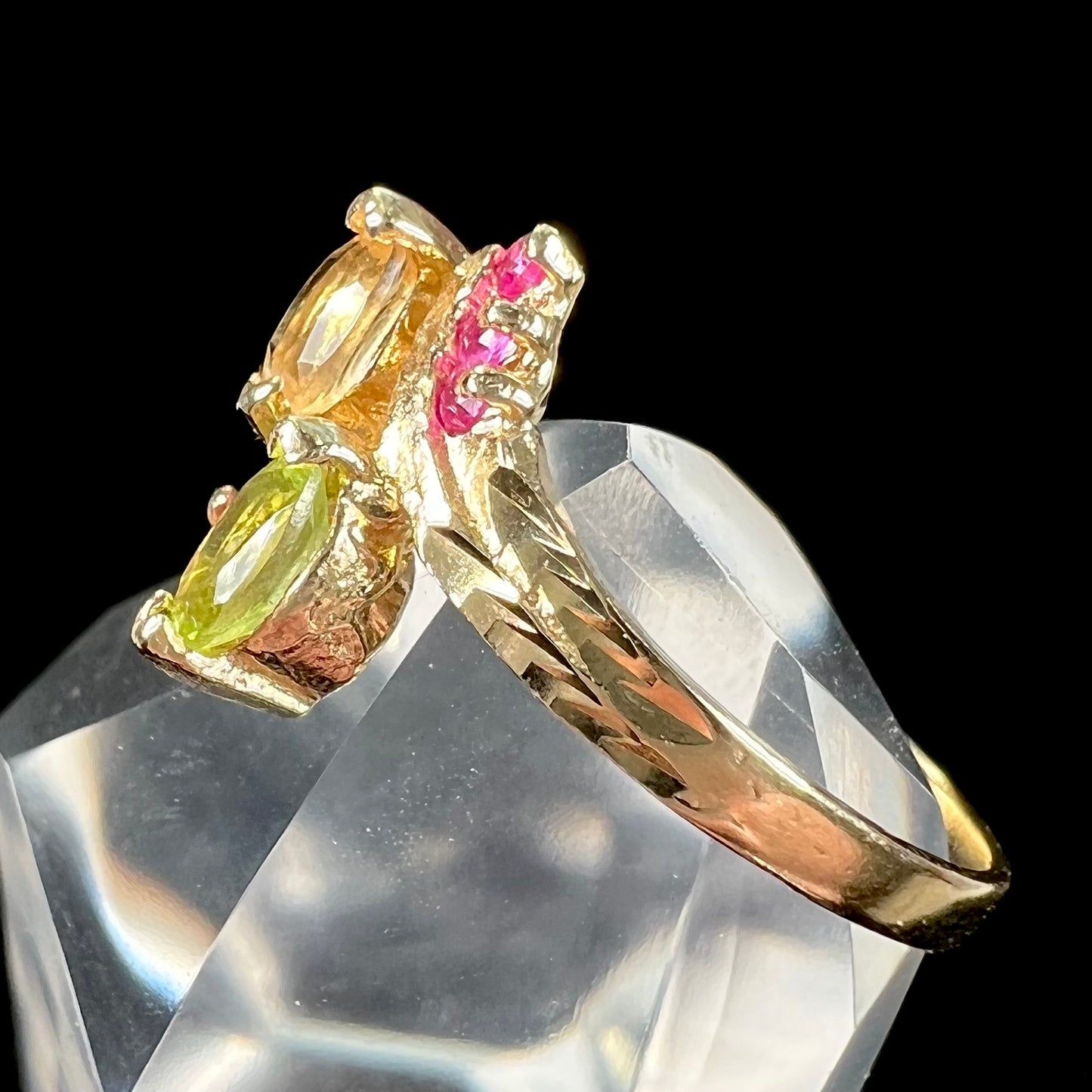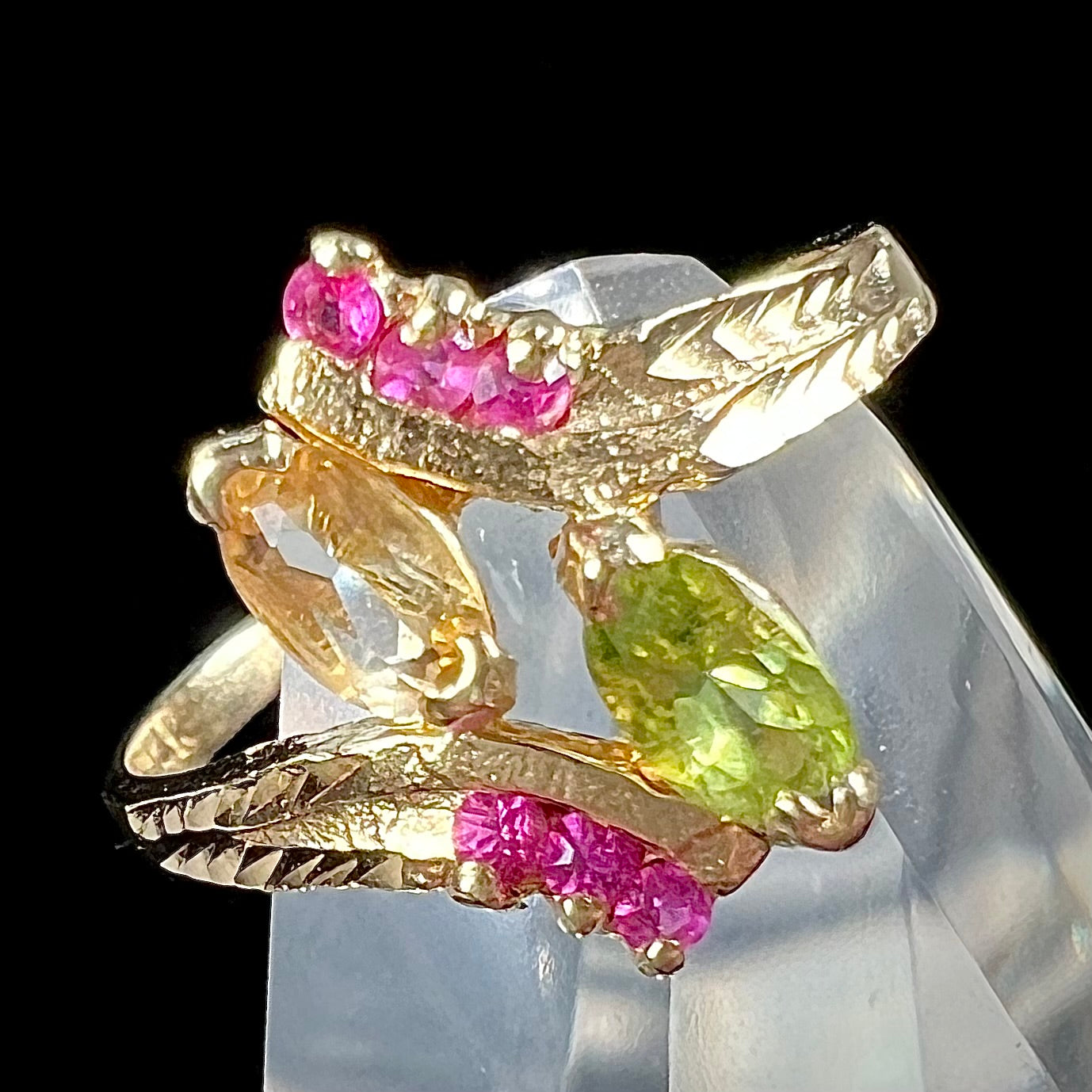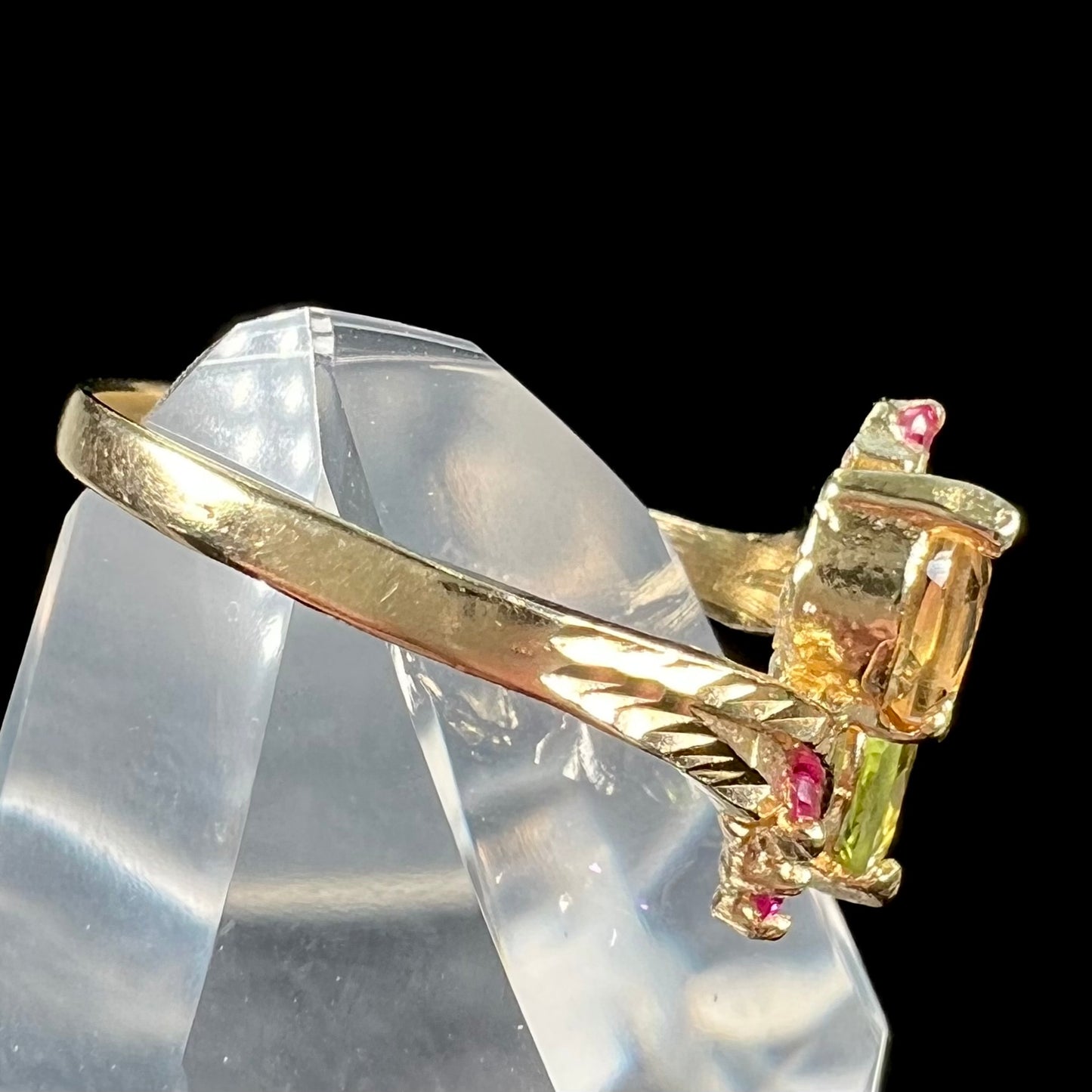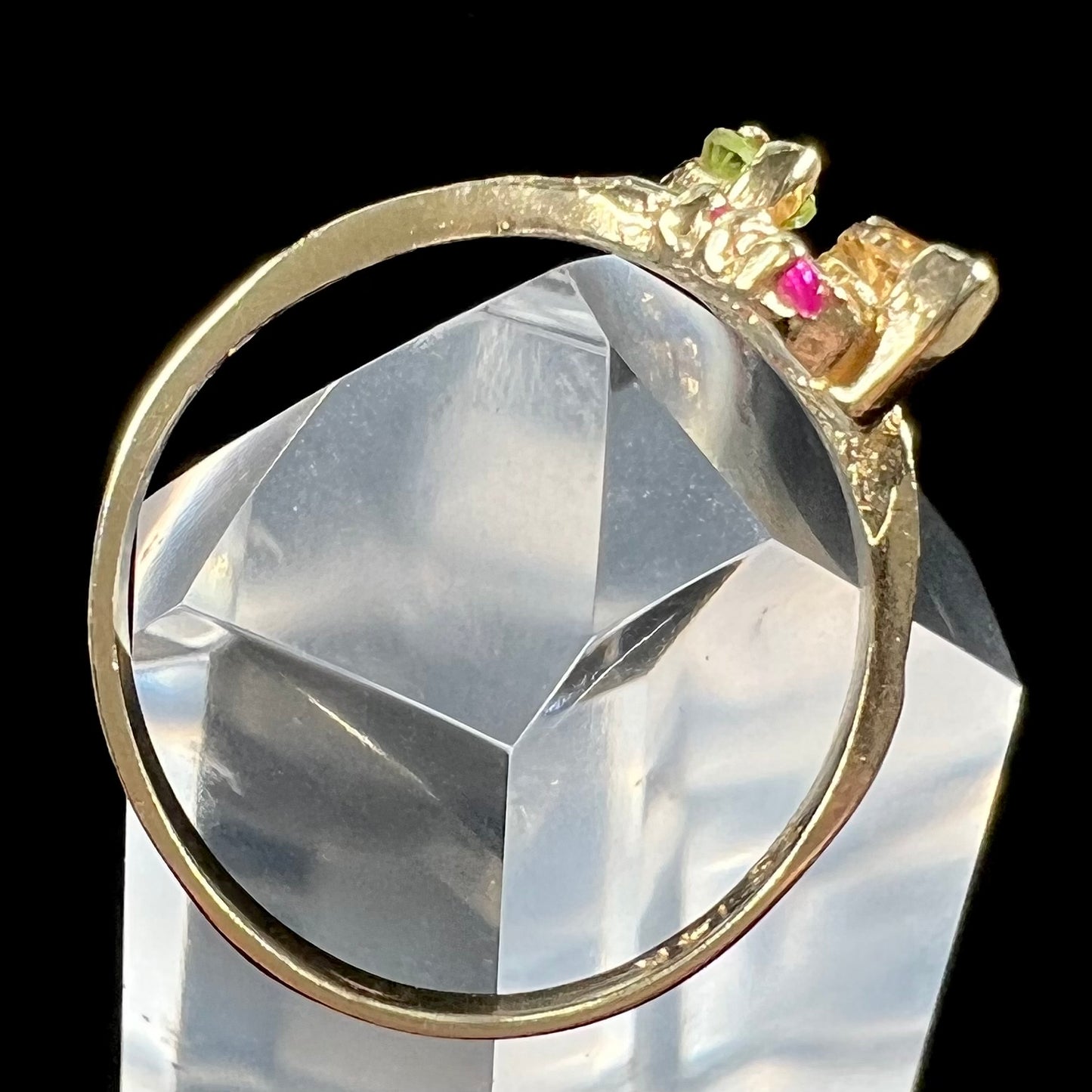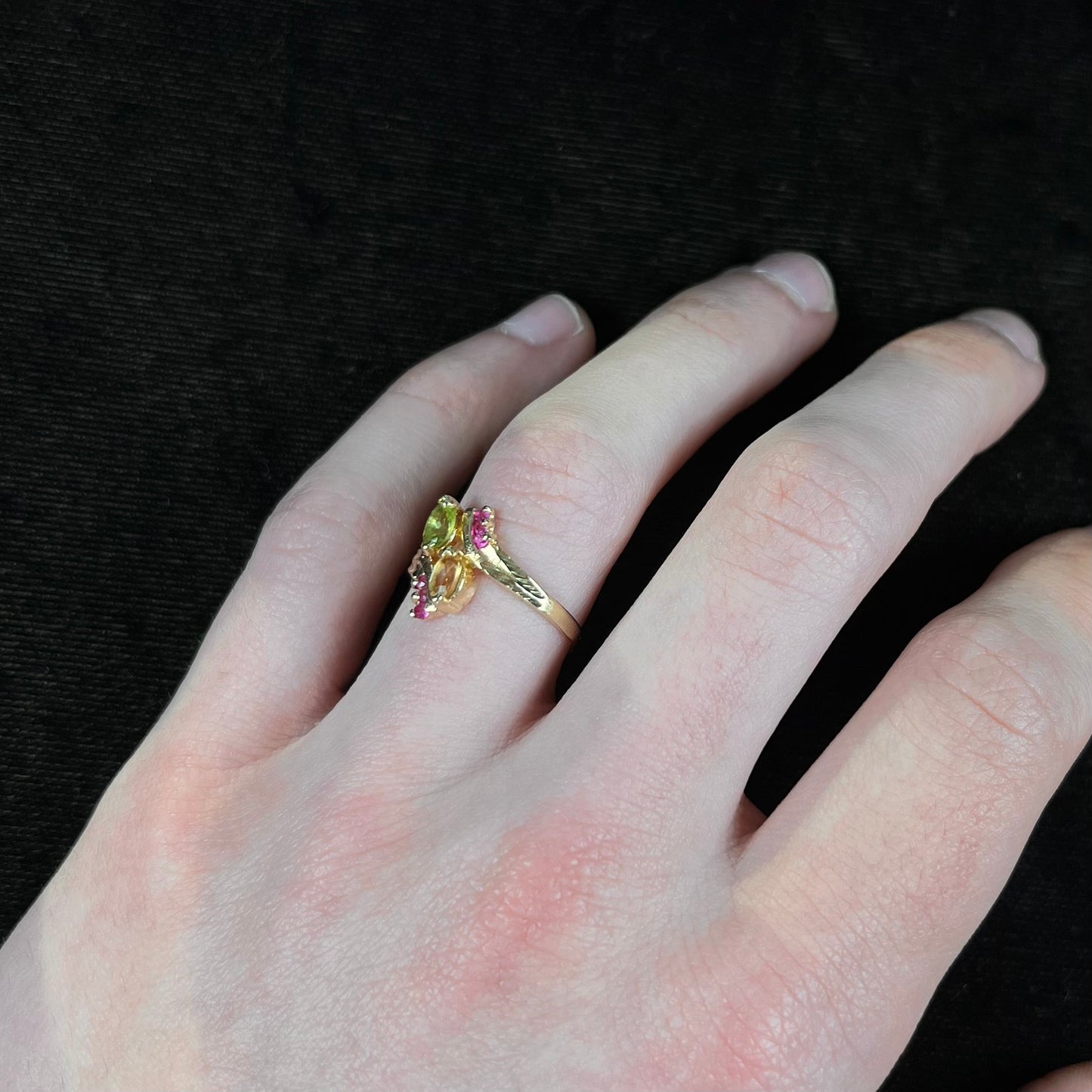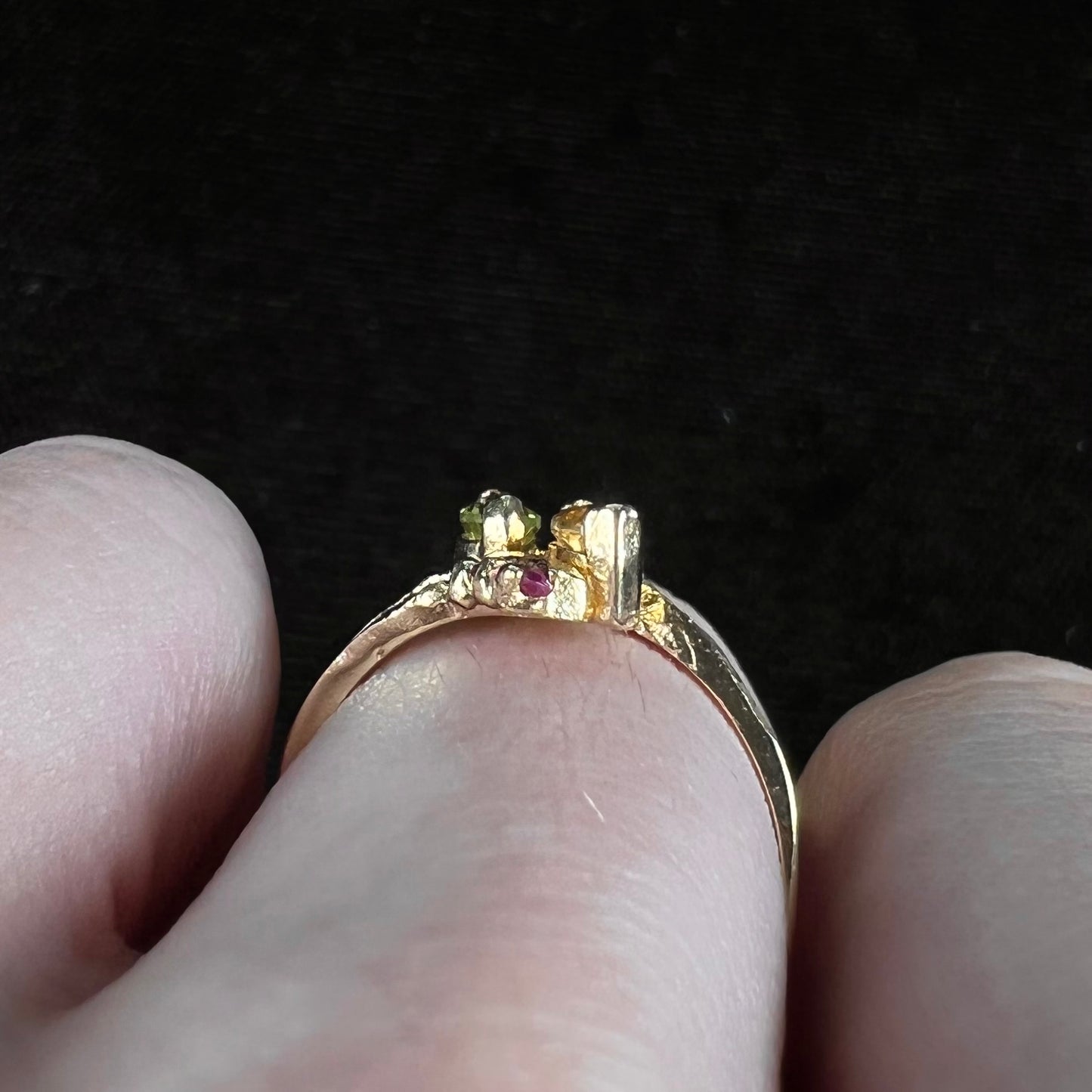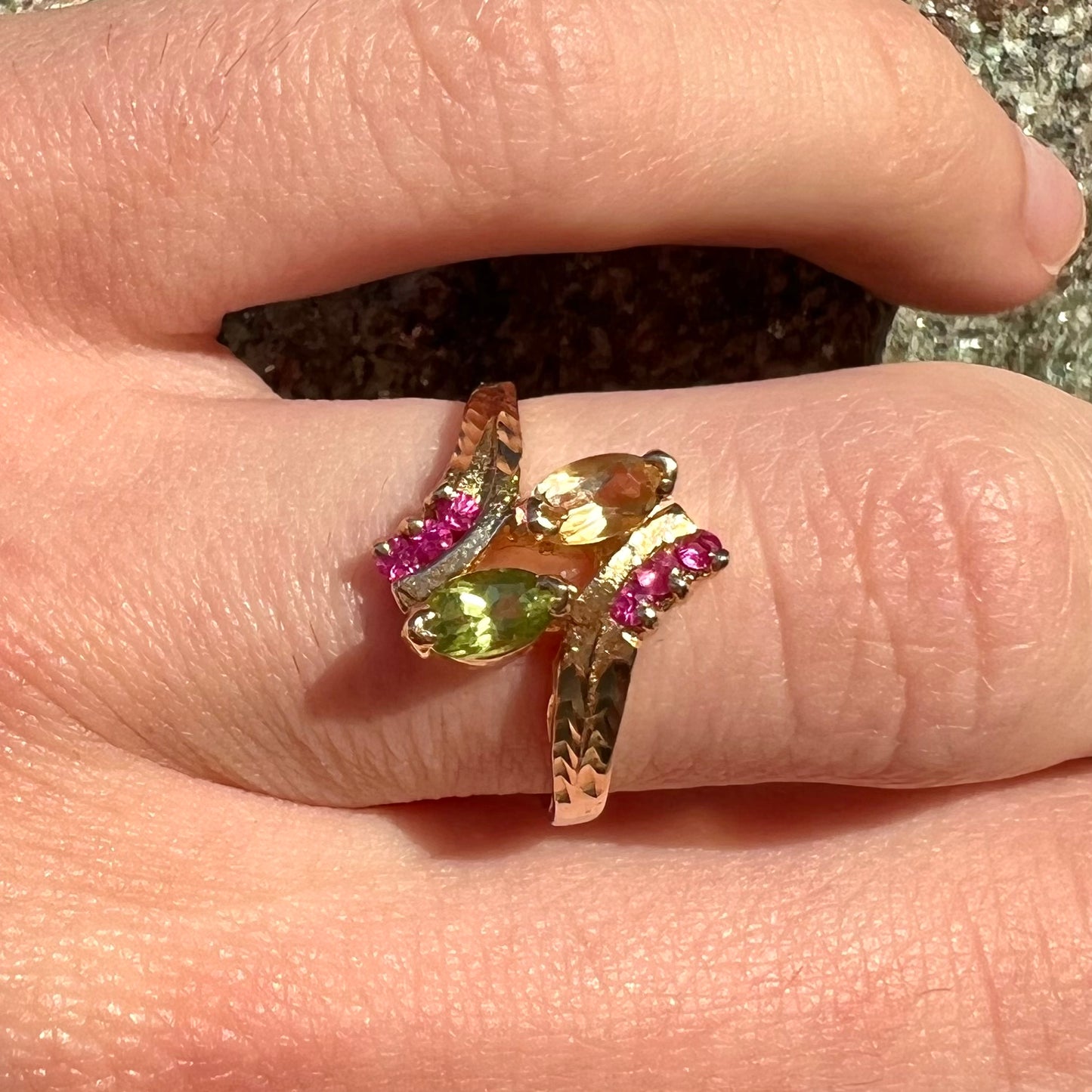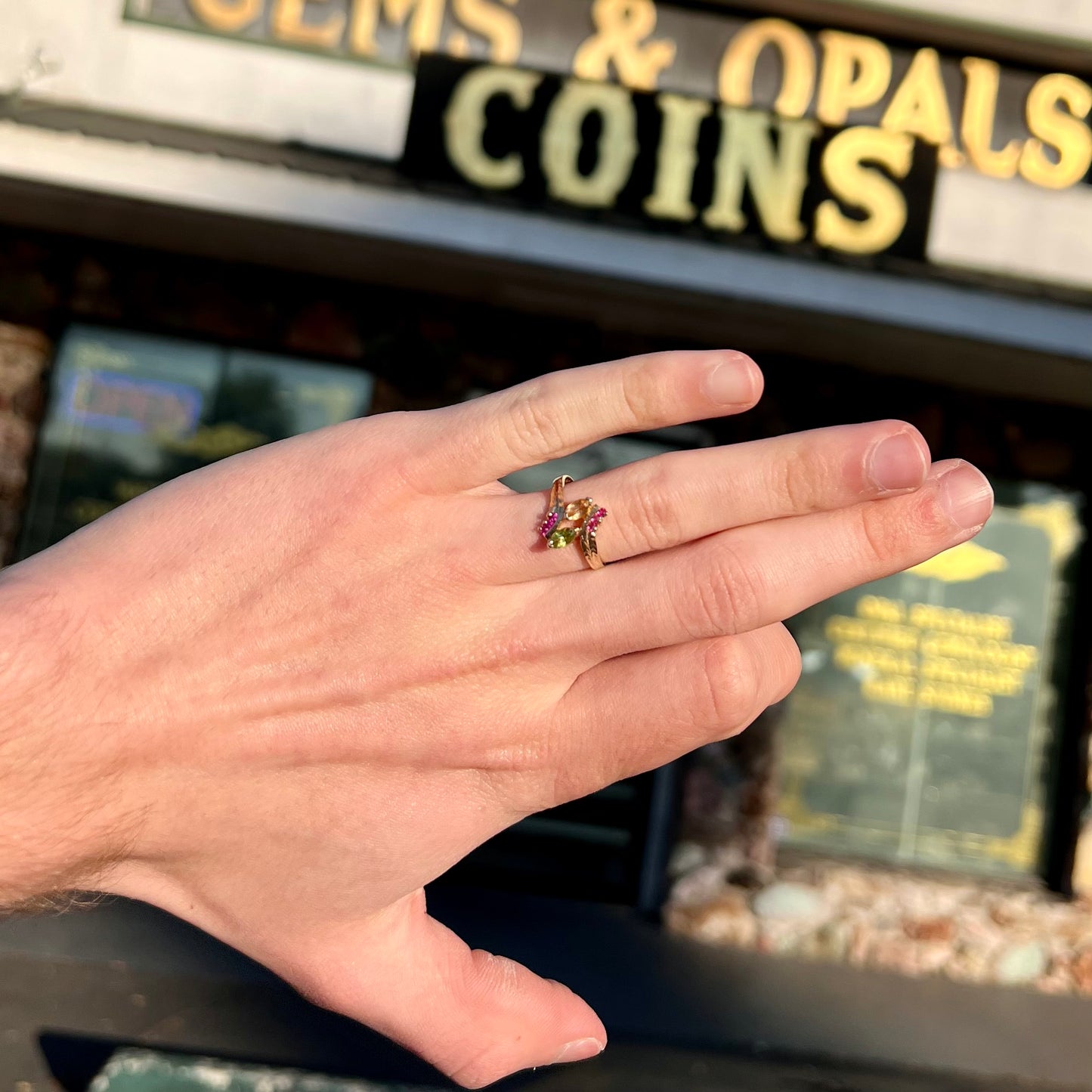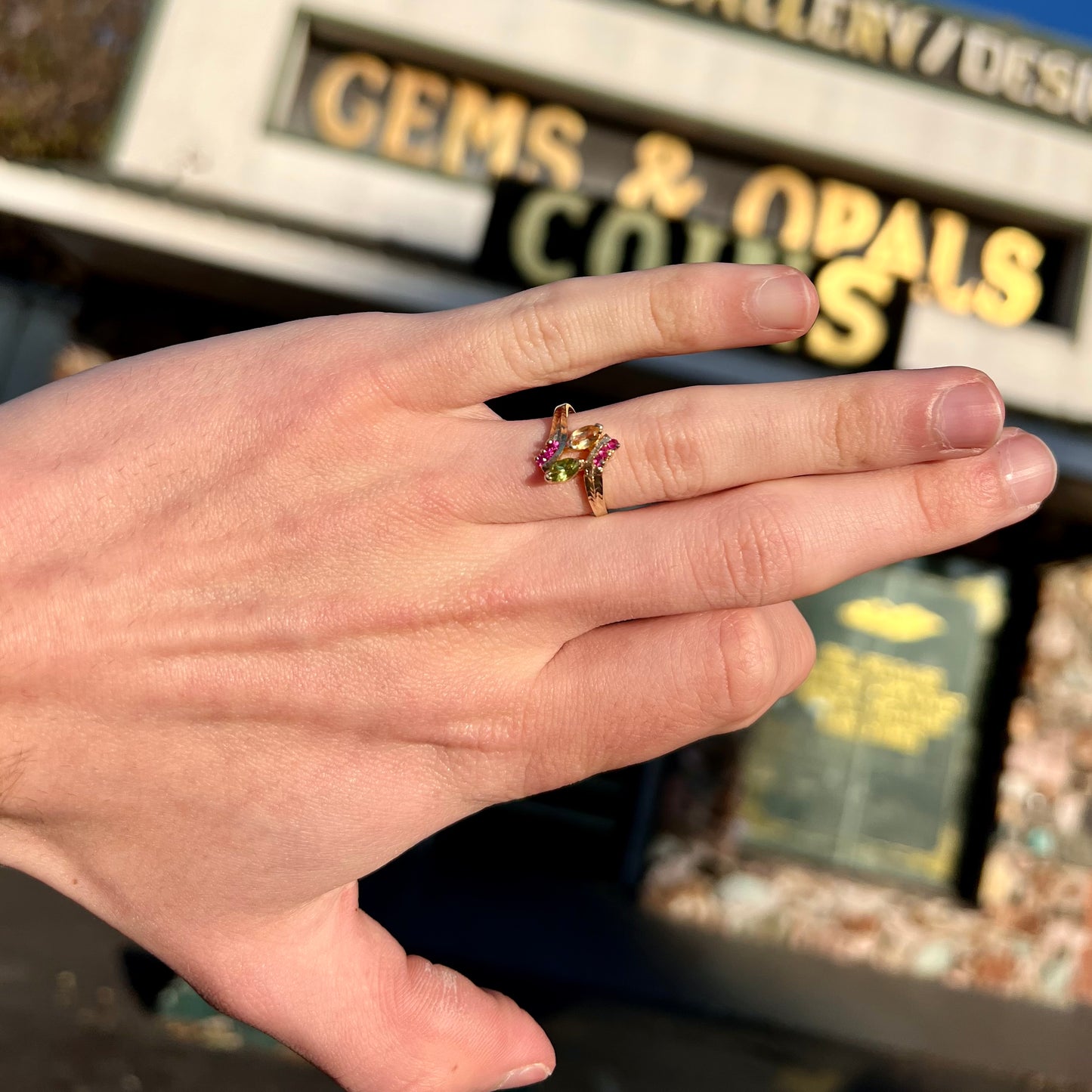Burton's Gems and Opals
Peridot, Citrine, & Ruby Ring | 14kt
Peridot, Citrine, & Ruby Ring | 14kt
Couldn't load pickup availability
A Bit About The Piece:
Dainty citrine and peridot ring set with natural pink ruby accents.
Details, details...
The Main Stones: Peridot and Citrine
- 1 faceted marquise cut peridot
- 1 faceted marquise cut citrine
- average stone measurements: 4.71mm x 2.96mm
The Side Stones: Ruby, natural
- 6 faceted round cuts
- average millimeter size: 1.49mm
- color: pinkish red
The Setting: Cast Prong and Pave Set Ring
- 14kt yellow gold, solid
- default size: 6.50
About Peridot:
Peridot, a gem variety of "olivine," was a stone coveted by ancient Egyptians and referred to as "topaz" for over a millennium. This was not by mistake, either; peridot's first discovery was on the island of Topazios (now St. John's Island) in the Red Sea, circa 300 BC. This island was infested with lethal snakes, making the gem very desirable due to its difficulty to obtain. Over time, the island was cleared of snakes on pharaoh's orders, and other deposits were discovered later. The English word "peridot" was not first recorded until 1705, and the reason for this is still largely unknown.
Today, gem grade peridot comes from the Native American San Carlos Reservation in Arizona, as well as Sri Lanka, Myanmar (formerly Burma), and Pakistan. A different variety of olivine similar to peridot, referred to as "forsterite," is also known to be found in meteorite. These meteorites are called "pallasites."
Peridot is 6.5 to 7 on the Mohs hardness scale. Stones make excellent rings, but years of constant everyday wear will eventually go noticed. Peridot jewelry is safe to put in chemical jewelry cleaner, but we strongly advise against steam cleaning or putting peridot jewelry into an ultrasonic cleaning machine. These can cause stones to break. When in doubt, it is always safe to clean peridot jewelry with mild to warm water, soap, and a soft bristled toothbrush.
About Citrine:
Citrine is a yellow variety of quartz. Often used as an alternate birthstone to topaz for the month of November, shades can vary from a pale yellow to vivid red-orange (referred to as "Madeira citrine"). Some stones can contain varying amounts of purple amethyst, even going as far as creating a vivid natural split of yellow and purple; this is called "ametrine." Natural citrine can be found in Russia and Madagascar, though purple amethyst from Brazil is commonly heat treated to create citrine. This is a widely accepted practice in the gem trade, and it is indistinguishable from non-treated material without an independent lab report.
Because citrine is quartz, material is durable and ranks 7 on the Mohs hardness scale. Citrine makes great rings and is easy to clean with soap and water at home. Chemical jewelry cleaners are safe to use on citrine jewelry.
About Ruby:
Ruby is a red variety of "corundum," the same family of gems as sapphire. While all ruby is red sapphire, not all red sapphire is ruby. The term "ruby" is a rather subjective one, with many gem merchants eager to use the word liberally. If a stone has too much purple, pink, orange, or brown (giving a brick-red appearance), it is to be referred to as sapphire of that particular color (with "brick red" sapphire simply referred to as "red sapphire"), not ruby. Ruby is the official birthstone for the month of July.
All corundum ranks 9 on the Mohs hardness scale and is very tough. This material is incredibly durable and highly encouraged to those shopping around for an alternative stone for an engagement ring. Ruby and sapphire of any color make excellent rings that can be passed down through generations. Ruby can be cleaned with chemical jewelry cleaners without any worry.
Wanna closer look?
Share
